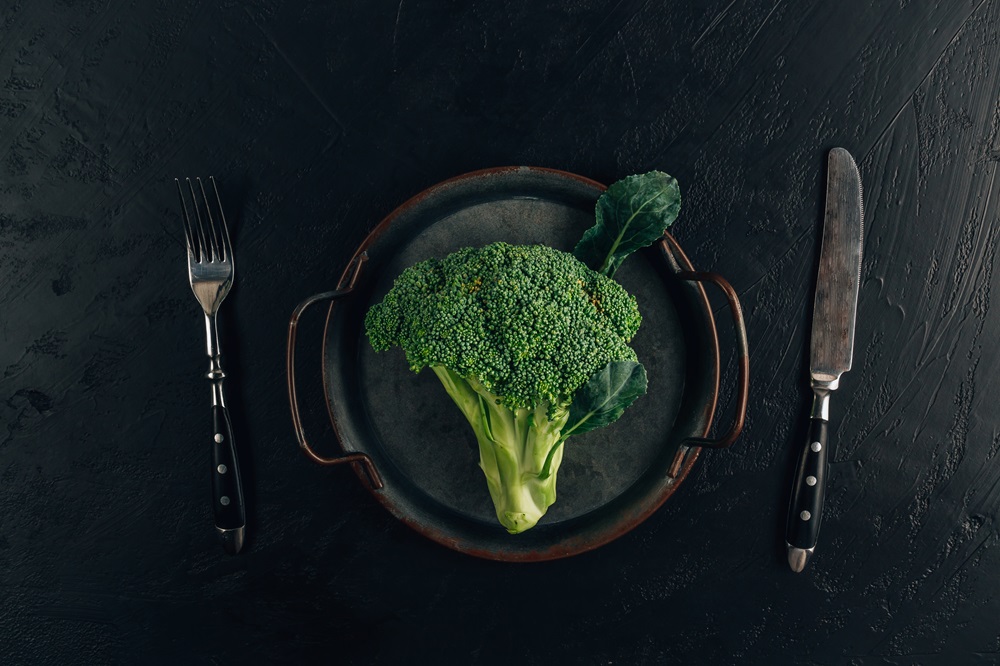The Copenhagen diet - restrictive slimming diet

Copenhagen diet is a restrictive, thirteen-day menu, recommended as an effective slimming diet. It is a rich-protein nutrition plan, which is based on three meals with a strictly defined composition every day. What are the main principles of the Copenhagen diet? Is the proposed eating plan healthy? What can be the consequences of the Copenhagen diet?
What is the Copenhagen diet?
The Copenhagen diet is a rigorous nutritional plan, often also called the Danish diet or the thirteen-day diet. It comes from Copenhagen, lasting less than two weeks, slimming program, which is based on a significant reduction in the supply of calories. Therefore, it is not recommended to use the menu more than once every two years. The Copenhagen diet is monotonous and very restrictive. The basis of the menu are high-protein products, while carbohydrate and high-fat foods on the Danish diet are significantly reduced.
The Copenhagen diet is a low-energy eating plan used to reduce body weight. In theory, it has the same advantages and in a short time helps to lose unnecessary kilograms. What does the Danish diet look like in practice? Does it meet the criteria for a healthy weight loss diet?
Principles of the Copenhagen diet
The Copenhagen diet is based on restrictive assumptions that must be strictly respected. If any deviations and irregularities occur in the use of the 13-day menu, the diet should be discontinued, and re-use of the nutrition plan can be started as soon as possible after three months.
The Copenhagen diet is a thirteen-day menu, which takes into account the very low supply of calories - according to the assumptions of the diet, the energy supplied with the menu is only 600-800 kcal per day. In addition, only three meals are allowed in the nutrition plan during the day, which should be eaten at strictly defined times - breakfast between 8:00 and 9:00, lunch about 14:00 and dinner between 17:00 and 18:00. When following the Copenhagen diet, it is necessary to follow a pre-determined menu - it is forbidden to eat additional snacks or even chew gum.
During one day of the diet, it is allowed to change the order of meals consumed, but you can not change the order of days in the nutrition plan. The Copenhagen diet is a thirteen-day nutritional plan in which after eight days of diet, meals are repeated.
Products allowed and prohibited on the Copenhagen diet
When using dietary restrictions in accordance with the Danish diet, it is allowed to consume products such as:
- meat,
- eggs,
- fishes,
- raw vegetables,
- dairy products,
- coffee.
The consumption of cereal products or fruits is significantly reduced on the Copenhagen diet. When using the nutrition plan, you should give up salt and spices. A strictly defined menu also does not include legumes, potatoes, nuts or seeds.

The Copenhagen diet - menu
What is an example of a menu on the Copenhagen diet? What does the use of restrictive principles of the nutritional plan look like in practice?
| Diet day | Breakfast | Lunch | Dinner |
|---|---|---|---|
| 1 diet day | black coffee with a sugar cube | 2 Hard boiled eggs, 100 g of boiled spinach or broccoli, tomato | 200 g of beef beefsteak, 5 lettuce leaves, a tablespoon of olive oil and lemon juice |
| 2 diet day | black coffee with a sugar cube | 200 g of beef beefsteak, 5 lettuce leaves, a tablespoon of olive oil and lemon juice and 1 raw fruit (apple, pineapple or grapefruit) | slice of lean chicken ham, 2/3 cup of natural yogurt |
| 3 diet day | black coffee with a sugar cube, 1 toast | glass of cooked spinach, 1 tomato, 1 fresh fruit | 2 hard-boiled eggs, a slice of lean ham and 5 lettuce leaves, a tablespoon of olive oil and lemon juicey |
| 4 diet day | black coffee with a sugar cube | hard-boiled egg, grated large carrot, small pack of cottage cheese | half a cup of compote without added sugar, 2/3 cup of natural yogurt |
| 5 diet day | 1 grated large carrot with lemon juice | 300 g of lean, boiled fish, lemon juice | 200 g of beef beefsteak, 5 lettuce leaves, 6-8 florets boiled broccoli |
| 6 diet day | black coffee with sugar cubes, one toast | 150 g of boiled chicken breast without skin, 5 lettuce leaves, a tablespoon of olive oil, lemon juice | 2 hard-boiled eggs, grated carrot |
| 7 diet day | green tea without sugar | 150 g of roasted chicken breast, 1 fresh fruit (apple, pineapple, grapefruit) | nothing |
From the 8th to the 13th day of the diet, you should repeat the menu, i.e. on the eighth day you should eat the same as on the first day of the nutritional plan, and on the ninth day, the same thing, during the second day of the diet.

The Copenhagen diet - effects
The Copenhagen diet is a rigorous nutritional plan, which tempts people who are struggling with excessive body weight, allowing them to "lose" unnecessary kilograms in a short time. Proponents of the Danish diet suggest that strict adherence to the 13-day menu allows losing about 10 kg. Unfortunately, any short-term diet plan, taking into account significant restrictions, can lead to the occurrence of the yo-yo effect, that is, "recovery" of lost kilograms as a result of returning to unhealthy eating habits after the end of the Copenhagen diet. Moreover, increasing the supply of carbohydrates, after a period of limitation of their consumption, can contribute to a rapid ejection of insulin, as well as to stimulate glycolysis and lipogenesis, thus, it can cause the opposite effect than intended.
According to the principles of healthy eating, safe weight loss takes into account the loss of 0.5 - 1.0 kg of body weight in a week. At the same time, the correct reduction diet is based on a slight energy deficit and provides the body with all the necessary macro-and micronutrients, without contributing to the formation of deficiencies in the body. Healthy weight reduction can be used long-term because it is based on proper eating habits. In addition, it does not cause hunger and does not favour the yo-yo effect.
In turn, the Copenhagen diet discussed in the article is a very low-energy nutritional plan that stimulates hunger, does not provide a feeling of satiety and can contribute to slowing down metabolism. In addition, the rigorous menu does not facilitate the formation of healthy eating habits and does not introduce gradual changes in the diet used every day.
Read also:
Weight-loss diet - principles and recommended products
What do you need to know before starting a weight loss diet?
Advantages and disadvantages of the Copenhagen diet
The Copenhagen restrictive diet is not considered a healthy eating plan, but it has several advantages - it limits the consumption of table salt, provides a high supply of liquids and eliminates alcohol from the menu. What's more, it is easy to use, its preparation does not require much time or special skills. However, the 13-day menu has many more disadvantages than advantages - it provides a supply of a small amount of energy, not satisfying even the basic needs of the body, and additionally promotes deficiencies of vitamins and minerals. The Copenhagen diet does not provide adequate amounts of dietary fibre and may result in constipation, and a significant reduction in body weight during the use of restrictions is primarily associated with the loss of water, not body fat. In addition, the Danish diet does not support the formation of healthy eating habits and can cause ketoacidosis. The rigorous menu also causes a constant feeling of hunger and may contribute to problems with concentration, weakness, irritability and headache.

The Copenhagen diet - opinion
The Copenhagen diet is a low-energy diet, which is known among people who want to reduce body weight. Some praise this model of weight loss, but there are many more negative opinions - people unaware of the health consequences that may be associated with the use of such the rigorous diet, they complain most often about the feeling of hunger during the use of the restrictions and the yo-yo effect that appeared shortly after the end of the diet.
The Copenhagen diet - contraindications and side effects
The Copenhagen diet has nothing to do with healthy eating and can contribute to the destruction of the body, therefore its use is not recommended. The 13-day menu should be abandoned in particular by people who suffer from kidney disease, cardiovascular disease or are struggling with gastrointestinal diseases. In addition, the Danish diet is not a good solution for young people in the period of intensive growth, as well as for the elderly or physically active people.
The Copenhagen diet can cause a slowdown in metabolism, weakness and chronic fatigue of the body, and can also contribute to the deterioration of physical condition, reduction of muscle mass, weakening of nails and hair. A much better solution for people who want to reduce body weight is to introduce healthy modifications to the daily menu that can allow gradual but long-term changes in body composition, as well as improving well-being and health.

